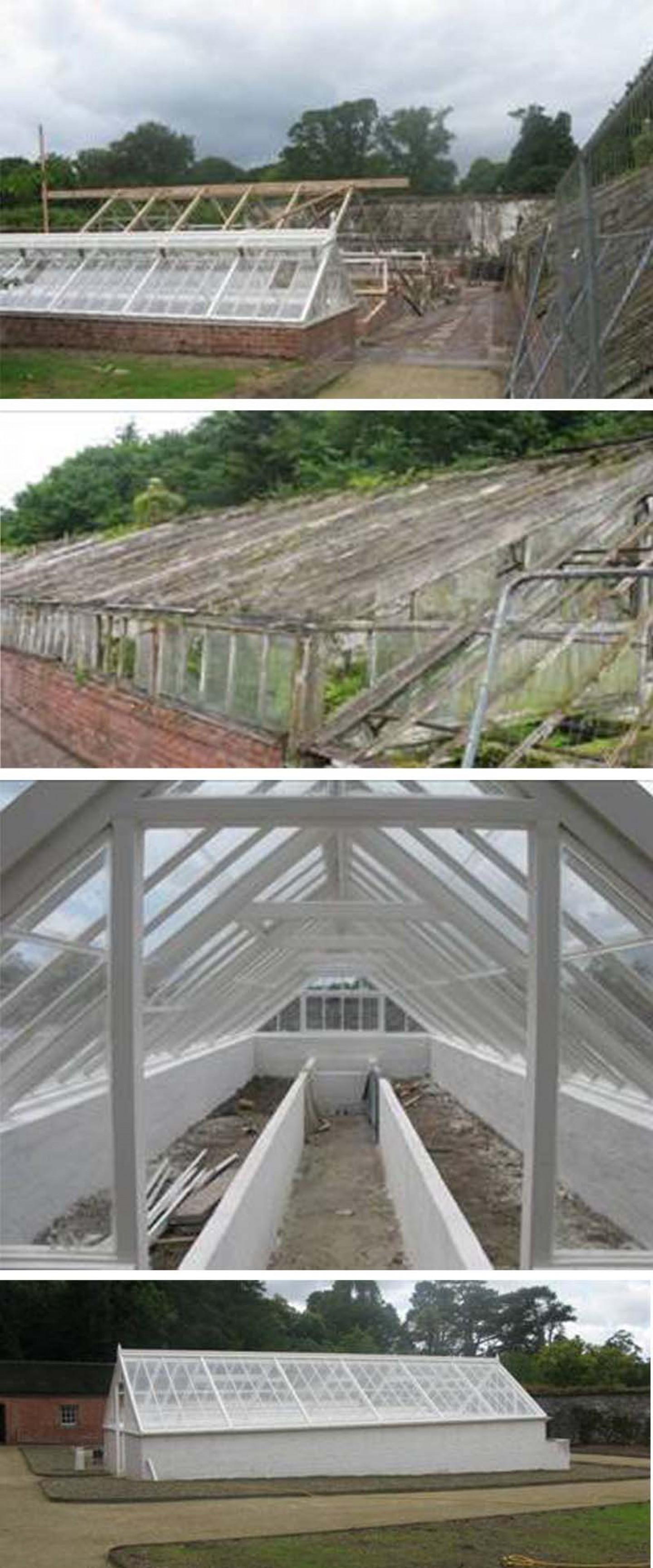Fota House is located just outside the city of Cork, near to Cork Harbour, where changeable weather continuously impacts upon the local buildings. Accoya wood, supplied by Abbeywoods, was selected as the material of choice for the restoration of the glasshouses due to its renowned durability and stability in all weathers.
The Fota House restoration began over a year ago. The glasshouses were given paramount importance to the project as they embodied the Edwardian horticultural heritage. The word ‘Fota’ itself in the traditional Gaelic language translates as ‘warm soil’, hence the presence of many exotically cultivated plants in the gardens of the estate. It was here that the Smith-Barry family started planting the most exotic species of trees as far back as the 1840’s. With a view to reinstating as much of the glasshouses’ original historic feel, it was essential to save as much of the initial construction as possible.
The restoration project of the three glasshouses was in fact more of a challenge than it initially seemed. It required much patience and attention to detail as every element of the construction needed to be carefully documented before being dismantled. Moreover, every element which could be, had to be reused, making it a meticulous and lengthy process, but the results proved to be well worth the wait.
Some of the roof members had to be replaced but most were salvaged and carefully repaired. The rot was worse along the top edge of the rafters and at the birds-mouth joint where they joined the vertical window frames. The rot was removed to sound timber and skilfully cut Accoya splices were stitched-in. The traditional way to repair old timbers would be to cut a new splice, label it and send it away for preservative treating and then fit it when returned. The use of Accoya sped up and simplified the process by avoiding the need for preservation.
Accoya was also the obvious material for the parts that could not be reused. Not only for its aesthetic appeal but for the exceptional durability it possesses. Accoya wood has created a visually beautiful construction that will last for decades. The wood guarantees 50 years of durability which is a measure of rot-resistance. Its properties match or exceed those of the most dense tropical hardwoods. Additionally, its dimensional stability enabled the new splices to be fitted without the risk of differential movement making the joint lines visible through the paint.
The conservation architect John O’Connell and his team were in charge of the project, which apart from the glasshouses, included four Edwardian hothouses. “Even before we started working on the project we knew that it would be quite a challenge. This time it was more about reviving the old feel and making sure that we maintain as much of the old structure as possible. It is always easier to work on projects such as this if the material used is as good as Accoya. There was a lot pressure but it was a great experience to be part of such a historical project”, said John.
The combination of the extraordinary work of the architects, construction specialists and highly skilled joiners along with the use of white coated Accoya wood, has converted the aged and derelict building into wonderful glasshouses that recapture its previous essence.
